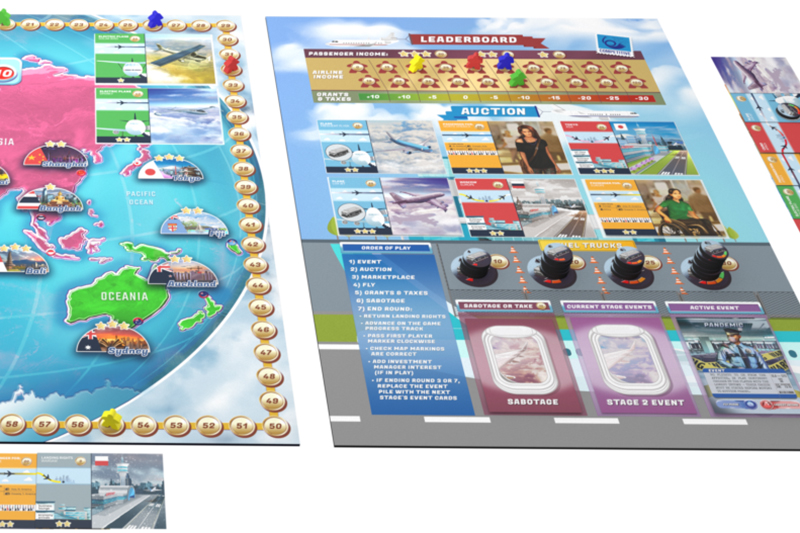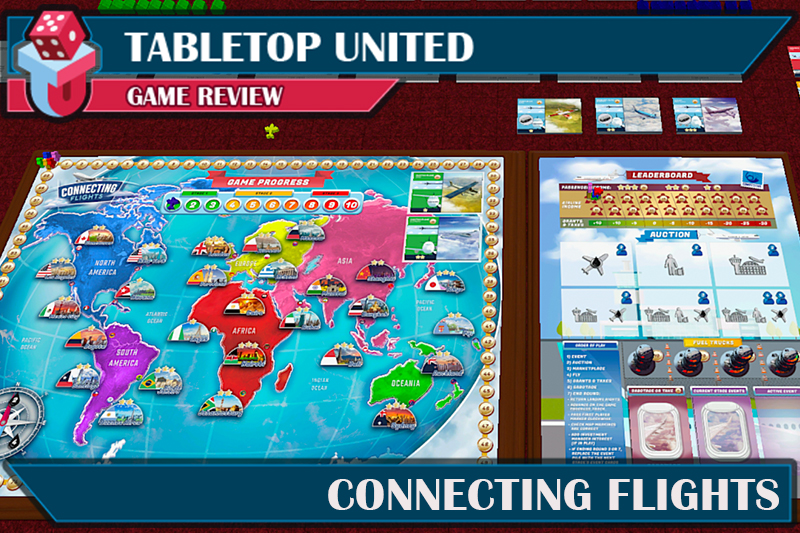A Gateway Game to Efficiency Building
Designer: Rafa Dawid
Artist: James Churchill
Publisher: Bazzite Games
Year Published: Kickstarter April 2021
No. of Players: 1-5
Ages: 12+
Playing Time: 60-150 minutes
Main mechanic / Theme: Pick up and deliver, route building
Now Boarding Travel Enthusiasts!
Find more info on BoardGameGeek.com
Follow on Kickstarter
Disclaimer: Publisher provided a copy of the game for this review.
Overview:
The Connecting Flights game takes to the skies in largely unclaimed board game air space by putting you in the executive seat of a passenger air travel company tasked with connecting efficient networks consisting of passengers, airports, and planes. You connect visual pathways by biding for cards and catering to the needs of your aircraft and travelers all the while weathering event cards and attempted sabotage by opponents. There is a distinct cooperative mode as well as a solo mode.
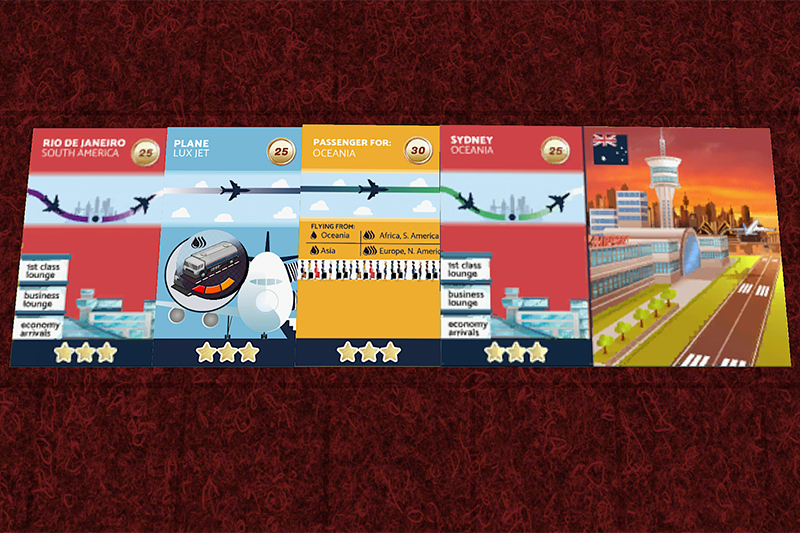
Gameplay and mechanics:
The following statements are based on the 2 player competitive game mode.
Though the game gets compared to Ticket to Ride, I think it is more similar to Power Grid. If you don't know either of those games, allow me to explain. You’re building an engine/system rather than a fixed road/route. The planes, passengers, and airports with which you build your system come in a public marketplace where you bid against your opponents for ownership. Comparing it back to Ticket to Ride, your system is modular and recombinable, while the railway tracks are largely intractable when laid down. Connecting Flights’ system outputs an income every round until an inevitable end stage rather than banking victory points up to a winning number. In this way, it's more like crafting a Power Grid to output electricity. The game goes to whoever is outputting the most income at the moment of the last round.
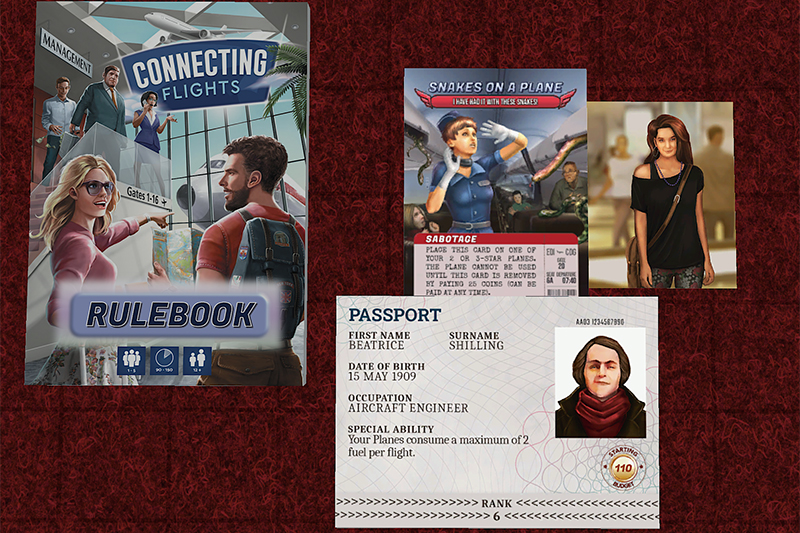
Theme, Artwork and Illustration, Graphic Design and Layout:
The graphic design for the passenger/airport/plane cards were very well thought out. As the most used component of the game, they were powerful and greatly streamlined the learning process. I felt the visual communication guiding me and correcting potential mistakes without having to reference any additional components. Definitely the strongest and most memorable part of the game.
The component art felt very disjointed compared to the cover and the graphics both in quality and style. Though I understand the cover art and interior art can vary for indie titles, I think the level of skill could have been a little closer. The graphic design, though highly effective felt very generic and was somewhat inconsistantly styled throughout the different card types.
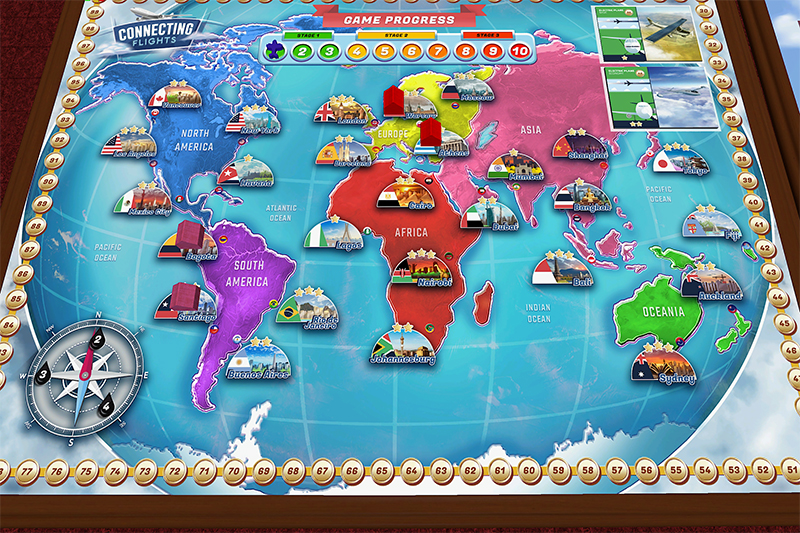
Inclusivity Statement:
At the time of this review, not all art assets were in place and the designer made an explicit statement about efforts to add diversity into the upcoming art. For a game that has internationality at its core, I am excited to see it reflected further in the characters.
What worked:
The balancing felt tight and I felt confident I had played the game correctly on my first try without too much doubt or mid-game ambiguity. Again, the graphic design that illustrated flight travel greatly aided retention of the mechanic. The event cards did a great job at shaking up my builds and preventing them from becoming too ossified. It;s something I appreciate over the more linear Ticket to Ride progression and is reflected in the ever shifting engines of Power Grid.
Final thoughts:
It fills a unique niche in two ways: using the theme of air travel and serving the role as a gateway game to more complex titles like Power Grid. The game was less immersive and exciting as I typically prefer for its time length, but could be enticing to an audience that would rather build, bid, and adapt efficiency engines. My partner and I are both artists and graphic designers so we spent a lot of time musing about what the visuals could have been. Flavor and impact could be improved by incorporating more airport terminal elegance and travel agency folk aesthetics with brighter and crisper art. I can see better visuals leading to fun tangents about the unique people met in airports or the fantastic sculptures/displays that characterize international terminals. Overall a solid game that advertises additional distinct modes, has great learnability, but could do with a final visual polish.
